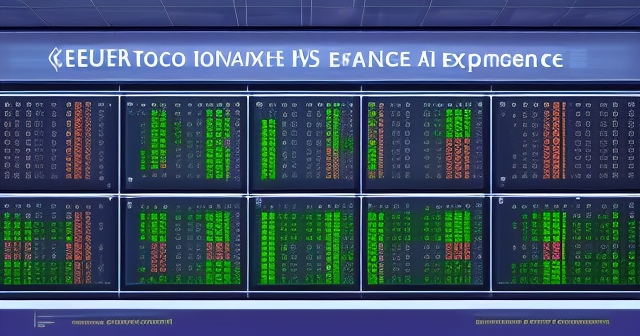“`html
The Euro’s Odyssey: From the Conceptual ECU to Global Forex Cornerstone Amidst Shifting Tides
Welcome to a journey through the fascinating world of currencies, specifically focusing on the evolution and impact of the Euro. If you’re new to investing or looking to deepen your understanding of technical analysis, grasping the fundamentals and the historical context of major currency pairs is absolutely crucial. The Euro, the official currency of a significant portion of the European Union, stands as a pillar of the global financial system. But its story didn’t begin with physical banknotes and coins; it started with a groundbreaking, albeit non-physical, predecessor known as the European Currency Unit, or ECU.
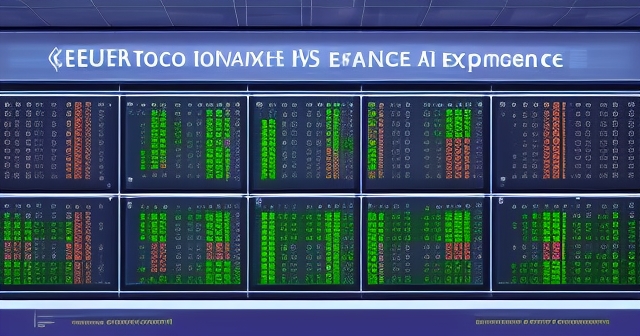
Tracing the Roots: The European Currency Unit (ECU) and the Birth of a Union
Before the Euro became a tangible reality in your wallet, Europe’s monetary cooperation framework relied on the European Currency Unit (ECU). Introduced on March 13, 1979, as the official monetary unit of the European Monetary System (EMS), the ECU was a truly innovative concept for its time. It wasn’t a currency you could hold or spend in shops; instead, it served primarily as an accounting unit and a reserve asset for the member states of the European Economic Community, the precursor to the EU.
- The ECU was originally based on a basket of currencies from nine countries.
- Its value fluctuated based on daily market rates, reflecting economic realities.
- The ECU functioned as a common denominator for trade and financial claims among central banks.
Think of the ECU as a weighted average, a basket composed of the currencies of the member countries. Initially, this basket included currencies from nine countries. As more nations joined the European Community, their currencies were progressively integrated into the ECU basket, reflecting the evolving economic landscape of the union. The value of the ECU was calculated daily based on the market exchange rates of its component currencies. This sophisticated structure allowed it to function as a common denominator for accounting purposes, a reference point for exchange rates within the EMS, and an instrument for settling financial claims between EC central banks.
The primary objective of the EMS and its ECU centerpiece was to foster monetary cooperation and stability across member states. The system included the Exchange Rate Mechanism (ERM), where participants committed to keeping their national currencies’ exchange rates within specific fluctuation bands relative to the ECU’s value. This was an ambitious attempt to reduce exchange rate volatility, which could hinder trade and investment between European nations. While the ERM faced periods of intense pressure and realignments, notably during crises like the one on “Black Wednesday” in 1992, it laid vital groundwork by accustoming central banks and markets to the idea of coordinated monetary policy and stable exchange rates.
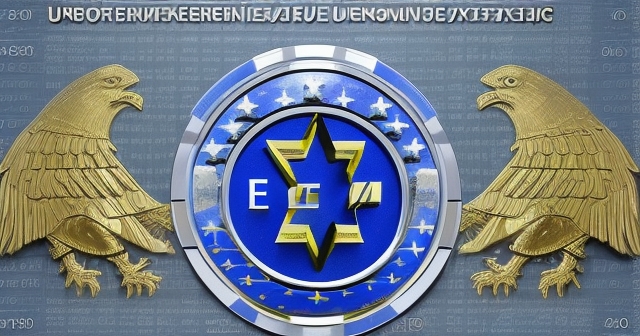
The transition from the conceptual ECU to the physical Euro was a carefully planned, multi-stage process. On January 1, 1999, the Euro was officially introduced as an accounting currency, irrevocably replacing the ECU at a fixed, one-to-one conversion rate (1 EUR = 1 ECU). This 1:1 parity was a crucial psychological and technical step, ensuring a smooth handover from the old accounting unit to the new single currency. For three years, the Euro existed alongside national currencies, primarily for electronic transactions and accounting. Then, on January 1, 2002, Euro banknotes and coins were put into circulation, replacing the national currencies of the initial twelve Eurozone members. This marked the definitive end of currencies like the German Mark, French Franc, Italian Lira, Spanish Peseta, and many others, at fixed conversion rates that had been established in 1999.
Understanding the ECU’s role and its seamless replacement by the Euro at par is essential for comprehending the legitimacy and historical depth of the single European currency. It wasn’t created in a vacuum but emerged from decades of deliberate effort towards monetary integration, with the ECU serving as the critical intermediate step and technical blueprint.
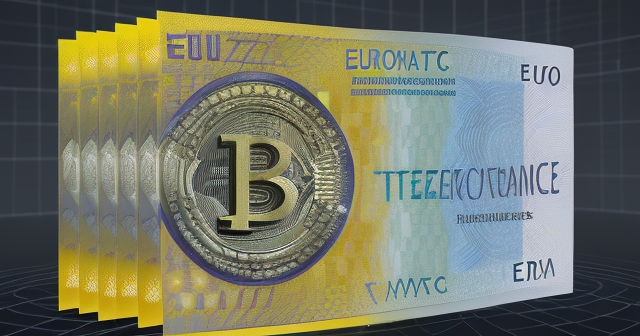
The Euro’s Global Footprint: Status as Legal Tender and Reserve Currency
Today, the Euro stands as far more than just an accounting unit. It is the official currency and legal tender in 20 of the 27 member states of the European Union, forming the economic bloc known as the Eurozone (or the euro area). When a currency is designated as legal tender, it means that creditors are legally obliged to accept it in payment for debts, unless otherwise agreed upon in a contract. This status ensures the Euro’s universal acceptance within the Eurozone, underpinning confidence in its value and usability for all transactions, from buying groceries to settling large corporate invoices.
The Eurozone encompasses a vast and diverse economy, making the Euro one of the most significant currencies in the world. Its reach extends beyond the official 20 member states. Several non-EU sovereign states, such as Andorra, Monaco, San Marino, and Vatican City, use the Euro based on formal agreements with the EU. Furthermore, the Euro is the de facto currency in some other territories. This widespread adoption solidifies the Euro’s importance on the international stage.
| Currency | Country/Region |
|---|---|
| Euro | Eurozone Members |
| Andorran Euro | Andorra |
| Monaco Euro | Monaco |
| San Marino Euro | San Marino |
| Vatican Euro | Vatican City |
On the global financial markets, the Euro holds immense sway. It is consistently ranked as the second-most traded currency on the foreign exchange (forex or FX) market, trailing only the mighty US Dollar (USD). The pairing of the Euro and the US Dollar, known as EUR/USD, is the most liquid and heavily traded currency pair in the world. This high trading volume means tighter spreads (the difference between the buy and sell price), making it attractive for both retail and institutional traders. Its dominance in forex trading reflects the intertwined economic relationship between the Eurozone and the United States.
Beyond trading, the Euro is also a major global reserve currency. Central banks and financial institutions around the world hold significant amounts of Euros in their foreign exchange reserves. While the US Dollar still holds the top spot, the Euro’s position as the second most held reserve currency highlights its perceived stability and the economic strength of the Eurozone. Holding reserves in a currency like the Euro allows central banks to manage their own currency’s stability, facilitate international trade and investment, and diversify their holdings.
Additionally, several currencies are formally pegged to the Euro. This means their exchange rate is fixed or managed within a narrow band relative to the Euro’s value. Examples include the Bulgarian Lev and the Bosnia and Herzegovina Convertible Mark. Such pegs link the monetary policy and economic fortunes of these countries closely to those of the Eurozone, providing a degree of exchange rate certainty that can facilitate trade and investment between them and the euro area.
The Euro’s journey from a composite accounting unit to a global legal tender and reserve currency is a testament to decades of political will, economic coordination, and the successful implementation of a complex monetary union project. Its status today is a direct result of the foundation laid by the ECU and the EMS, albeit having overcome challenges that plagued those earlier systems.
If you’re navigating the vast world of international markets and looking to trade major currency pairs like EUR/USD, understanding the instruments available is key.
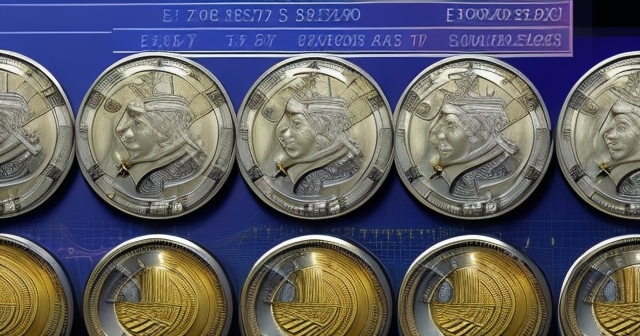
If you’re considering starting forex trading or exploring more CFD products, Moneta Markets is a platform worth considering. Originating from Australia, it offers over 1000 financial instruments, catering to both beginners and professional traders alike.
Decoding the EUR/USD Dance: Factors Driving Exchange Rate Dynamics
The EUR/USD exchange rate is not static; it’s a dynamic reflection of countless economic, political, and psychological factors constantly interacting. For traders and investors, understanding what moves this pair is paramount to navigating the forex market successfully. When we speak of EUR/USD, we are referring to the number of US Dollars required to purchase one Euro. A rising rate means the Euro is strengthening relative to the Dollar, while a falling rate indicates the Euro is weakening.
At the heart of exchange rate movements lie fundamental economic principles. Interest rate differentials are a major driver. The monetary policy decisions of the European Central Bank (ECB) and the US Federal Reserve (the Fed) have a profound impact. If the ECB raises interest rates while the Fed holds steady, it can make Euro-denominated assets (like bonds) more attractive to foreign investors seeking higher yields. Increased demand for Euro assets typically translates into increased demand for the Euro currency, pushing EUR/USD higher. Conversely, if the Fed raises rates faster than the ECB, the Dollar may strengthen.
Beyond interest rates, a host of economic indicators from both the Eurozone and the US influence the pair. Gross Domestic Product (GDP) growth figures, inflation rates (Consumer Price Index – CPI), employment data (like the US Non-Farm Payrolls), retail sales, industrial production, and trade balance figures all provide insights into the relative health and future prospects of the two economies. Strong economic performance in the Eurozone relative to the US tends to support the Euro, and vice versa. Market participants constantly analyze these data releases, looking for clues about potential future economic trends and monetary policy adjustments.
| Economic Indicators | Impact on EUR/USD |
|---|---|
| GDP Growth | Faster growth in Eurozone typically strengthens Euro |
| Inflation Rates | Higher inflation may lead to tighter monetary policy from ECB |
| Employment Data | Improving employment figures can bolster confidence in Eurozone economy |
However, currency markets are not solely driven by economics. Political situations and geopolitical events can introduce significant volatility. Recent examples have starkly illustrated this. Concerns over political stability or policy uncertainty within major Eurozone member states, such as France or Germany, can weaken investor confidence in the Euro. If political risk rises, investors might shift capital away from Euro-denominated assets towards perceived safe havens like the US Dollar or government bonds, leading to a depreciation of the Euro. The widening of the French-German yield spread in financial markets due to French political concerns, as referenced in the data, is a tangible example of how political risk translates into market anxiety and can affect currency valuations.
Global risk sentiment also plays a role. In times of heightened global uncertainty or financial market stress, the US Dollar often benefits from its status as the world’s primary safe-haven currency. Capital tends to flow into Dollar assets regardless of the specific economic situation in the US or Eurozone, causing EUR/USD to fall. Conversely, during periods of optimism and risk appetite, investors may be more willing to invest in higher-yielding or growth-oriented assets, potentially benefiting currencies like the Euro if the Eurozone economy is performing well.
For those employing technical analysis, the EUR/USD chart offers a wealth of patterns and signals. Traders use tools like support and resistance levels, trend lines, moving averages, and chart patterns to identify potential entry and exit points. The high liquidity of EUR/USD means that technical analysis patterns can often be quite reliable, although they should always be used in conjunction with an awareness of fundamental and political factors.
Understanding the interplay of these forces – monetary policy divergence, relative economic performance, political stability, and global risk sentiment – is key to interpreting the movements of the EUR/USD pair. It’s a constant push and pull, reflecting the complex relationship between two of the world’s largest economic powers and their currencies.

Geopolitical Winds: Ukraine’s Currency Crossroads and the Euro’s Pull
Currency strategy is often a reflection of a nation’s economic ties, trade relationships, and geopolitical alignment. For countries on the periphery of major economic blocs, the choice of a primary reference currency can be a significant policy decision with long-term implications. The ongoing situation in Ukraine presents a compelling case study of how deepening political and economic ties with the European Union are influencing fundamental currency considerations, specifically the potential shift in the Hryvnia’s reference point.
Historically, since the introduction of the Ukrainian Hryvnia (UAH) in 1996, Ukraine’s monetary policy and exchange rate management have largely been anchored to the US Dollar (USD). The Dollar’s dominance in global trade, its status as a key reserve currency, and its relative stability (prior to recent years of elevated volatility) made it a logical reference point for many emerging market economies, including Ukraine. Even after adopting a managed exchange-rate regime in October 2023 (following a period of a fixed peg and subsequent devaluation in response to challenging conditions), the USD remained the primary currency against which the National Bank of Ukraine (NBU) managed the Hryvnia’s value.
However, recent developments suggest a potential strategic pivot. The National Bank of Ukraine is reportedly evaluating the possibility of shifting the Hryvnia’s reference currency from the USD to the Euro (EUR). This consideration is not merely a technical adjustment; it is deeply intertwined with Ukraine’s overarching geopolitical goals and evolving economic reality. As Ukraine pursues full membership in the European Union – a process that involves aligning its laws, regulations, and economic structures with the EU – a closer monetary alignment with the Eurozone becomes increasingly logical.
Several factors are driving this review. Firstly, Ukraine’s trade and economic integration with the EU are growing rapidly, particularly as trade routes and economic dependencies are disrupted by ongoing conflict. A larger share of Ukraine’s imports and exports are likely being conducted with EU partners, making the Euro a more relevant benchmark for the Hryvnia’s value. Secondly, strengthening defense and security ties with European nations also align with a strategic shift towards the Euro sphere of influence. Thirdly, the NBU may be responding to observed greater market volatility and global trade fragmentation, seeking a reference currency that better reflects Ukraine’s shifting economic gravity towards Europe.
Ukraine is not alone in this consideration. Neighboring Moldova, also pursuing closer ties with the EU, already made a similar shift. In January 2024, Moldova’s central bank switched the Lei’s reference currency from the US Dollar to the Euro. This precedent from a country with similar integration aspirations provides a potential model for Ukraine.

The NBU’s deliberation highlights a broader trend where geopolitical alignments are influencing currency strategies. For countries seeking to integrate with the EU, anchoring their currency to the Euro provides stability relative to their primary trading partners and aligns their monetary policy more closely with the European Central Bank, potentially easing future integration processes. This shift is not without its complexities, requiring careful technical assessment and communication to the market. Furthermore, Ukraine’s reliance on substantial external financing, expected to be around $55 billion for 2025, involves inflows in various currencies, but a Euro reference could simplify financial planning and reduce exchange rate risk relative to European aid and trade flows.
The potential move from a USD reference to a EUR reference for the Hryvnia is a clear signal of Ukraine’s determined path towards European integration and underscores the Euro’s growing magnetic pull in Eastern Europe amidst a changing global order.
The Euro’s Pillars: Institutions, Regulation, and Stability Efforts
The stability and credibility of the Euro are underpinned by a robust institutional and regulatory framework designed to manage monetary policy, supervise financial systems, and ensure the smooth functioning of the single currency. At the core of this framework is the European Central Bank (ECB), headquartered in Frankfurt. The ECB is the central bank for the 20 countries of the Eurozone, tasked with the primary objective of maintaining price stability (keeping inflation low and stable) within the euro area. It does this through various tools, including setting key interest rates, conducting open market operations, and providing forward guidance on future monetary policy intentions.
The ECB operates independently from national governments, a design intended to shield monetary policy decisions from short-term political pressures. This independence is considered crucial for building long-term credibility and anchoring inflation expectations. The ECB’s Governing Council, comprising the Executive Board and the governors of the national central banks of the Eurozone countries, makes the key monetary policy decisions.
- The ECB plays a significant role in banking supervision through the Single Supervisory Mechanism (SSM).
- Legal foundations for the Euro are set in the EU treaties, ensuring uniformity across member states.
- The Stability and Growth Pact coordinates fiscal policies among Eurozone members.
Beyond monetary policy, the ECB also plays a significant role in banking supervision through the Single Supervisory Mechanism (SSM), working with national supervisors to ensure the safety and soundness of banks within the Eurozone. This supervisory role is vital for maintaining financial stability, as banking crises can have severe repercussions for the broader economy and the value of the currency.
The legal basis for the Euro and the ECB’s functions is enshrined in the EU treaties, particularly the Treaty on the Functioning of the European Union (TFEU). Regulations like EC/974/98 established the legal framework for the introduction of the Euro, confirming its status as legal tender and specifying the rules for the conversion of national currencies. This legal foundation provides certainty and uniformity across the Eurozone, ensuring that the Euro is accepted and functions consistently in all member states.
While the ECB is responsible for monetary policy, fiscal policy (government spending and taxation) remains largely the responsibility of individual Eurozone member states. The Stability and Growth Pact provides a framework for coordinating national fiscal policies, aiming to prevent excessive government deficits and debt levels that could potentially threaten the stability of the euro area as a whole. However, coordinating fiscal policy among sovereign nations with diverse economic structures and political priorities has historically been a challenge for the Eurozone.
The Euro’s journey has seen it weather several storms, from the sovereign debt crisis in the early 2010s to more recent challenges like the COVID-19 pandemic and geopolitical conflicts. The institutional framework, led by the ECB, has evolved in response, introducing new tools and mechanisms aimed at preserving financial stability and supporting the Eurozone economy. These efforts underscore the commitment to the longevity and stability of the single currency.
For investors and traders, monitoring ECB announcements, understanding its mandate, and assessing the effectiveness of the Eurozone’s stability mechanisms are as important as analyzing economic data. These institutions form the bedrock upon which the Euro’s value and international standing are built.
Comparing Titans: The Euro Versus the US Dollar
In the global financial arena, the Euro and the US Dollar are the undisputed heavyweights. Their relationship, most visibly expressed through the EUR/USD exchange rate, is arguably the most important in the forex market. While both are major currencies, they operate within different economic and political structures, leading to distinct dynamics that traders must understand.
The US Dollar benefits significantly from its status as the world’s dominant reserve currency and the currency of choice for invoicing a vast majority of international trade commodities, particularly oil. This creates a constant global demand for dollars. The United States also has a single federal government and central bank (the Federal Reserve), which can often allow for more centralized and potentially quicker decision-making on fiscal stimulus or monetary policy compared to the Eurozone’s multi-country structure.
The Euro, while the second-largest, operates across 20 sovereign nations with varying economic conditions, fiscal policies, and political landscapes. This diversity is both a strength (representing a large combined economy) and a potential weakness (requiring complex coordination and consensus-building, which can sometimes be slow). The Eurozone has a single monetary policy set by the ECB, but 20 different national fiscal policies, which can occasionally lead to tensions or imbalances. However, the Euro’s strength lies in the depth and integration of the Eurozone’s internal market and the collective economic power of its member states.
| Comparison Factors | Euro | US Dollar |
|---|---|---|
| Monetary Policy | Decentralized, managed by ECB | Centralized, managed by Fed |
| Global Demand | Considerable, but less than USD | Dominant, major reserve currency |
| Political Stability | Varies by member states | Stable, single nation |
When comparing the two, consider factors like:
- Monetary Policy: The pace and direction of interest rate changes by the ECB versus the Fed. Divergences here are a primary driver of EUR/USD.
- Economic Growth: Relative GDP growth rates between the Eurozone and the US. Faster growth in one region tends to strengthen its currency.
- Inflation: Differences in inflation rates influence purchasing power and can impact central bank policy.
- Political Stability & Risk: Political events in the US (e.g., elections, debt ceiling debates) or key Eurozone countries (as seen recently in France) can introduce currency volatility.
- Safe-Haven Status: While both can act as safe havens to some extent, the USD is generally considered the premier safe haven during periods of extreme global stress.
- Trade Balances: Large trade deficits or surpluses can impact currency demand.
Trading the EUR/USD pair requires paying close attention to economic calendars for both regions, monitoring news headlines for political developments, and understanding the prevailing global risk sentiment. The constant interplay between these forces creates the opportunities and challenges in trading this pair.
When engaging in forex trading, particularly with a major pair like EUR/USD, the platform you choose can significantly impact your experience.
In choosing a trading platform, the flexibility and technological edge of Moneta Markets are worth noting. It supports mainstream platforms like MT4, MT5, and Pro Trader, combining high-speed execution with low spread settings to offer a good trading experience.
Beyond the Basket: The Euro’s Impact on Member States and Pegged Currencies
The introduction of the Euro had profound and varied impacts on the countries that adopted it. For the initial members, it meant giving up their independent monetary policy and currency (like the Deutsche Mark, French Franc, etc.) and entrusting control to the ECB. This was a major shift, trading monetary sovereignty for the perceived benefits of stable exchange rates, reduced transaction costs for cross-border trade and investment, increased price transparency across the Eurozone, and the prestige of a major international currency.
The fixed, irrevocable conversion rates established in 1999 meant that the value of each old national currency relative to the Euro (and thus relative to each other) was permanently locked. This eliminated exchange rate risk between these countries, facilitating deeper economic integration. Businesses no longer needed to hedge against fluctuations between the Mark and the Franc, for example, simplifying cross-border commerce and investment.
However, joining the Eurozone also removed a key adjustment mechanism: the ability to devalue one’s currency to regain competitiveness. If a country’s economy becomes less competitive (e.g., due to higher wage growth or lower productivity compared to neighbors), in a pre-Euro world, it could devalue its currency to make its exports cheaper. Within the Eurozone, this is not possible. Instead, countries must rely on “internal devaluation,” such as controlling wages or implementing structural reforms, which can be politically and socially challenging.
For countries that joined later, like those from Central and Eastern Europe, adopting the Euro was often seen as the culmination of their post-communist transition and integration with Western Europe. It offered access to the stability and credibility of the single currency area. However, joining the Eurozone requires meeting strict criteria known as the Maastricht Convergence Criteria, related to inflation, government debt and deficit levels, interest rates, and exchange rate stability (often requiring participation in ERM II, a successor to the original ERM, for at least two years without severe tensions).
Beyond the full members, several currencies are formally or informally pegged to the Euro. This strategic decision is usually made by countries with strong trade or financial links to the Eurozone. Pegging provides exchange rate stability relative to their main trading partner, reducing uncertainty for businesses. However, it also means the pegging country’s monetary policy must largely follow that of the ECB; they lose independent control over their interest rates, which might not always be appropriate for their domestic economic conditions. The Bulgarian Lev’s peg to the Euro, for example, means Bulgaria’s central bank effectively imports the ECB’s monetary policy. The decision by countries like Ukraine or Moldova to consider shifting their reference currency towards the Euro also implicitly involves aligning more closely with the Euro’s dynamics, even if they maintain a managed float rather than a strict peg.
The Euro’s impact on member states and pegged economies is a complex interplay of gained stability and integration benefits versus the loss of independent monetary and exchange rate policy tools. It is a cornerstone of the European project, binding its participants in a unique monetary union.
Looking Ahead: Challenges and the Euro’s Future Path
The Euro, like any major currency operating in a complex global environment, faces ongoing challenges. While it has successfully established itself as a major global player, its future path will be shaped by its ability to navigate both internal Eurozone dynamics and external global pressures.
One persistent challenge for the Eurozone is the incomplete nature of its economic and fiscal union. While monetary policy is centralized under the ECB, fiscal policies remain decentralized among member states. This can lead to divergent economic performances and require difficult coordination during economic downturns or crises. Debates over fiscal rules, debt sharing, and potential future steps towards deeper fiscal integration continue to shape the Eurozone’s institutional landscape.
External factors, such as shifts in global trade patterns, geopolitical conflicts (like the one impacting Ukraine, discussed earlier), and changes in the international monetary system, also pose challenges. The Euro’s relationship with the US Dollar, the actions of other major central banks (like the Bank of Japan or the Bank of England), and the rise of digital currencies are all elements that will influence the Euro’s relative strength and role.
Furthermore, the Eurozone economy’s ability to adapt to structural changes, embrace innovation, and maintain competitiveness on the global stage will be crucial. Demographic trends, technological advancements, and the transition to a greener economy all present opportunities and require significant investment and policy adjustments from member states.
Despite these challenges, the Euro has proven remarkably resilient since its introduction. Its deep liquidity in financial markets, its status as a reserve currency, and the political commitment to the European project by its member states provide a strong foundation. The Eurozone has mechanisms in place, and continues to develop them, to address crises and support stability.
For traders and investors, the future of the Euro offers a landscape of both potential risk and opportunity. Monitoring the ECB’s policy stance, analyzing economic data releases from across the Eurozone, staying informed about political developments in key member states, and understanding the broader geopolitical context will be essential for successfully navigating the EUR market, whether you are trading spot forex, futures, or other financial instruments linked to the Euro’s value.
The Euro’s journey from the theoretical ECU to a cornerstone of the global financial system is a compelling narrative of economic integration and monetary ambition. Understanding its origins, its present status, and the forces shaping its future is an invaluable asset for anyone engaged with international markets.
If you’re seeking a regulated forex broker that offers global trading capabilities, Moneta Markets holds multiple international regulatory licenses, including FSCA, ASIC, and FSA. They provide fund segregation, free VPS, and 24/7 multilingual support, making them a preferred choice for many traders.
Conclusion: The Enduring Legacy of the Euro and its Path Forward
The story of the Euro is one of remarkable transformation and enduring significance. What began as a conceptual accounting unit, the European Currency Unit (ECU), designed to facilitate monetary cooperation and stability through the European Monetary System (EMS), has evolved into the physical currency for millions and a dominant force in global finance. The smooth transition from the ECU to the Euro at a 1:1 parity in 1999 was a critical technical and symbolic achievement, paving the way for the physical introduction in 2002 and the subsequent phasing out of historical national currencies.
Today, the Euro’s status as legal tender across the Eurozone, its position as the second-most traded currency globally, and its role as a major reserve currency underscore its integral place in the international monetary architecture. The dynamics of the key EUR/USD exchange rate serve as a constant barometer of the relative economic health, monetary policy divergence, and political stability between the Eurozone and the United States, influenced by a myriad of factors from interest rates to geopolitical shifts.
The case of Ukraine’s consideration to shift its Hryvnia reference currency from the US Dollar to the Euro is a powerful illustration of the Euro’s growing geopolitical weight and its magnetic pull on neighboring economies seeking deeper integration with the European Union. This move, potentially following Moldova’s recent precedent, highlights how strategic currency choices reflect evolving trade patterns, security alignments, and aspirations for closer political and economic union.
While the Eurozone faces ongoing challenges related to fiscal coordination, structural reforms, and external global volatility, the institutional framework provided by the European Central Bank and the collective commitment of member states offer resilience. The Euro’s journey reflects not just a technical monetary project but a profound political undertaking towards deeper European integration. For anyone involved in global finance, particularly forex trading or international investment, a solid understanding of the Euro’s history, its current function, and the complex forces that shape its value is indispensable for navigating the opportunities and risks in the ever-evolving currency landscape.
For traders looking for comprehensive tools and security, the platform you choose is fundamental.
If you’re seeking a regulated forex broker that offers global trading capabilities, Moneta Markets holds multiple international regulatory licenses, including FSCA, ASIC, and FSA. They provide fund segregation, free VPS, and 24/7 multilingual support, making them a preferred choice for many traders.
european currency unitFAQ
Q:What is the European Currency Unit (ECU)?
A:The ECU was an accounting unit used before the Euro, representing a basket of EU member currencies.
Q:How did the Euro replace the ECU?
A:The Euro was introduced at a one-to-one conversion rate with the ECU, transitioning from an accounting unit to a physical currency.
Q:Why is the Euro considered a major global currency?
A:The Euro is the second-most traded currency in the world and serves as a primary reserve currency for many countries.
“`
